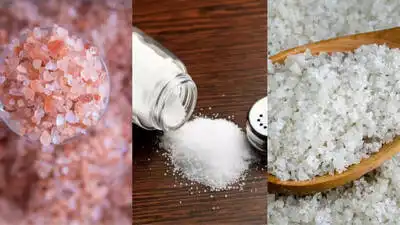Seasoning is perhaps the most fun part of cooking and dining. A dash of salt can take a dull dish and turn it into a culinary masterpiece. But beneath the flavours and foodie fads is a little-appreciated reality: not all salts are equal, and overdoing it can damage your heart. According to Today.com reports, two top cardiologists, Dr. Susan Cheng and Dr. Evan Levine, warn about a rising trend: using too much “fancy” salt, such as Himalayan pink salt and coarse sea salt. Their issue? So-called gourmet versions may be more detrimental to your health than you realise.
How salt helps and hurts your heart and health
Salt consists of sodium chloride, and sodium is a necessary mineral in your body. It serves a number of important functions:
- Controlling fluid balance
- Facilitating nerve impulses
- Permitting muscle contractions
But excessive sodium is not good. Excessive sodium consumption is directly associated with elevated blood pressure (hypertension), which raises the risk of:
- Heart disease
- Stroke
- Kidney damage
- Cognitive impairment in elderly individuals
Most adults should limit intake of sodium to 1,500 mg a day, according to the American Heart Association, although the absolute limit is 2,300 mg — roughly one teaspoon of table salt.
Reality check: The typical American eats approximately 3,400 mg of sodium a day, which is well over the safety limit.
Why fancy salts like pink and sea salt may not be healthier; here’s what experts warn
Popular salts such as coarse sea salt, Himalayan pink salt, and Celtic salt are usually touted as being better options. These offer the following:
- Natural origin
- Trace mineral composition (such as magnesium or potassium)
- Beauty in appearance and crunchy texture
But cardiologists have a very different reality to share.
Dr. Susan Cheng’s warns:
Cedars-Sinai Medical Center’s Dr. Cheng cautions that the coarser texture and larger crystals of these salts make it simple to unknowingly overuse them.
“That satisfying crunch makes you feel like you’re using a little bit, but really you’re adding a lot of extra sodium,” Dr. Cheng says.
Table salt, however, contains uniform, finer grains, so it delivers flavor more effectively and needs a smaller amount for the same salty flavor.
Dr. Evan Levine: “Don’t Fall for the Salt Hype”
Dr. Evan Levine, a prominent cardiologist and health mythbuster on TikTok, calls out the misinformation around Celtic salt and Himalayan salt.
Many people believe these salts are healthier because they’re “less processed” or contain extra minerals. But Dr. Levine clarifies:
“It’s sodium chloride — just like your regular salt. The so-called mineral benefits are negligible. You’re still eating salt.”
He condemns health influencers for their sale of these salts as detoxifying and therapeutic when they possess no demonstrated greater health value and are not iodized, a necessary nutrient in standard table salt.
Why table salt is a smarter option
Despite what people believe, iodized table salt may very well be the healthiest and most rational option for most individuals.
Here’s why:
- Iodine Fortification
- Iodine prevents thyroid illness and goiter.
- Most gourmet salts have no added iodine.
- Improved Portion Control
- Fine texture = more controlled use.
- You have maximum taste with reduced sodium.
- Regulated and Purified
- Table salt from the market is processed and tested for purity and safety.
- Unprocessed salts might have trace metals or impurities from the ground.
Sprinkle with caution: The surprising truth about salt intake
When you grab that gorgeous salt cellar full of pink crystals or rough flakes, you might not be aware of how much sodium you’re adding. This is particularly hazardous for:
- Individuals with blood pressure problems
- Those with heart disease or kidney disease
- Those who are attempting to control weight or inflammation
Salt is easy to exceed, not only from your seasoning — but also from processed and restaurant foods, which tend to be filled with unseen sodium.
